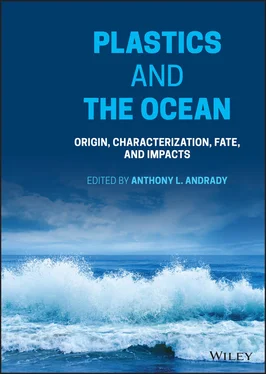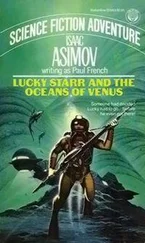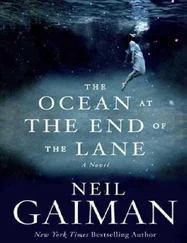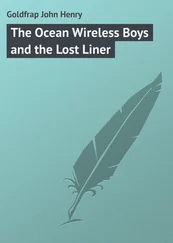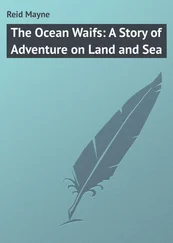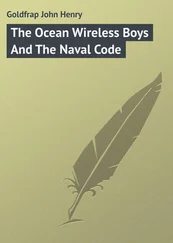Plastics and the Ocean
Здесь есть возможность читать онлайн «Plastics and the Ocean» — ознакомительный отрывок электронной книги совершенно бесплатно, а после прочтения отрывка купить полную версию. В некоторых случаях можно слушать аудио, скачать через торрент в формате fb2 и присутствует краткое содержание. Жанр: unrecognised, на английском языке. Описание произведения, (предисловие) а так же отзывы посетителей доступны на портале библиотеки ЛибКат.
- Название:Plastics and the Ocean
- Автор:
- Жанр:
- Год:неизвестен
- ISBN:нет данных
- Рейтинг книги:5 / 5. Голосов: 1
-
Избранное:Добавить в избранное
- Отзывы:
-
Ваша оценка:
- 100
- 1
- 2
- 3
- 4
- 5
Plastics and the Ocean: краткое содержание, описание и аннотация
Предлагаем к чтению аннотацию, описание, краткое содержание или предисловие (зависит от того, что написал сам автор книги «Plastics and the Ocean»). Если вы не нашли необходимую информацию о книге — напишите в комментариях, мы постараемся отыскать её.
Plastics and the Ocean
Plastics and the Ocean
Plastics and the Ocean — читать онлайн ознакомительный отрывок
Ниже представлен текст книги, разбитый по страницам. Система сохранения места последней прочитанной страницы, позволяет с удобством читать онлайн бесплатно книгу «Plastics and the Ocean», без необходимости каждый раз заново искать на чём Вы остановились. Поставьте закладку, и сможете в любой момент перейти на страницу, на которой закончили чтение.
Интервал:
Закладка:
Library of Congress Cataloging‐in‐Publication Data applied for
[Hardback: 9781119768401]
Cover Design: Wiley
Cover Image: © Serg64/Shutterstock
This work is dedicated with gratitude to my two mentors‐ Dr. R.O.B. Wijesekera (Ceylon Institute for Scientific Research, Colombo, Sri Lanka) and Professor Jim Harwood (University of Akron, Akron, OH, USA) , both exceptionally talented teachers as well as accomplished researchers, under whose able guidance I was fortunate enough to receive my own training in scientific research .
List of Contributors
Linda A. Amaral‐ZettlerNIOZ – Royal Netherlands Institute for Sea Research Den Burg, The Netherlands and Institute for Biodiversity and Ecosystem Dynamics University of Amsterdam Amsterdam, The Netherlands
Anthony L. AndradyDepartment of Chemical and Biomolecular Engineering North Carolina State University Raleigh, USA
Nathaniel J. ClarkInternational Marine Litter Research Unit, School of Biological and Marine Sciences University of Plymouth Plymouth, United Kingdom
Garth A. CoverntonDepartment of Ecology and Evolutionary Biology University of Toronto Ontario, Canada
Lia N. CorbettNIOZ – Royal Netherlands Institute for Sea Research Den Burg, The Netherlands and Institute for Biodiversity and Ecosystem Dynamics University of Amsterdam Amsterdam, The Netherlands
Winnie Courtene‐JonesInternational Marine Litter Research Unit School of Biological and Marine Sciences University of Plymouth Plymouth, United Kingdom
D. CracknellUniversity of Plymouth Plymouth, UK
Astrid C. FischerInternational Marine Litter Research Unit, School of Biological and Marine Sciences University of Plymouth Plymouth, United Kingdom
Jennifer M. LynchChemical Sciences Division, National Institute of Standards and Technology Gaithersburg, USA and Center for Marine Debris Research, Hawaii Pacific University Honolulu, USA
Amy L. LusherNorwegian Institute for Water Research (NIVA) Oslo, Norway and Department of Biological Science University of Bergen Bergen, Norway
Francois GalganiInstitut Français de Recherche pour l'Exploitation de la MER (IFREMER), Centre Méditerranée La Seyne‐sur‐Mer, France Olivia GérignyInstitut Français de Recherche pour l'Exploitation de la MER (IFREMER) Centre Méditerranée La Seyne‐sur‐Mer, France
Aoife A. GowenSchool of Biosystems and Food Engineering University College Dublin Dublin, Ireland
Xuan GuoLaboratory of Environmental Technology INET, Tsinghua University Beijing, China
Peter T. HarrisGrid Arendal Arendal, Norway
M. KooiAquatic Ecology and Water Quality Management Group Wageningen University The Netherlands
Bimali KoongollaGuangdong Provincial Key Laboratory of Applied Marine Biology South China Sea Institute of Oceanology, Institution of South China and Sea Ecology and Environmental Engineering Chinese Academy of Sciences (CAS) Guangzhou, China
Katrina KnauerNovoloop, Inc. Menlo Park, USA
L. LebretonThe Ocean Cleanup Rotterdam, The Netherlands and The Modelling House Raglan, New Zealand
Daoji LiState Key Laboratory of Estuarine and Coastal Research East China Normal University Shanghai, China
Kai LiuState Key Laboratory of Estuarine and Coastal Research East China Normal University Shanghai, China
Angiolillo MichelaIstituto Superiore per la Protezione e Ricerca Ambientale (ISPRA) Roma, Italy and Stazione Zoologica Anton Dohrn (SZN) Napoli, Italy
Thomas MaesGrid Arendal Arendal, Norway
T. ManiThe Ocean Cleanup Rotterdam, The Netherlands
S. M. MintenigAquatic Ecology and Water Quality Management Group Wageningen University The Netherlands
M. B. TekmanDeep‐Sea Ecology and Technology, Alfred Wegener Institute Helmholtz Centre for Polar Research Germany
Tim van EmmerikHydrology and Quantitative Water Management Group Wageningen University The Netherlands
S. NuojuaUniversity of Plymouth Plymouth, UK
S. PahlUniversity of Plymouth Plymouth, UK and University of Vienna Vienna, Austria
Karen RaubenheimerAustralian National Centre for Ocean Resources and Security (ANCORS) University of Wollongong Wollongong, Australia
Katherine R. ShawChemical Sciences Division, National Institute of Standards and Technology and Center for Marine Debris Research Hawaii Pacific University
Anna SchwarzNetherlands Organisation for Applied Scientific Research (TNO) Utrecht, The Netherlands
Natalie S. SmithInternational Marine Litter Research Unit, School of Biological and Marine Sciences University of Plymouth Plymouth, United Kingdom
Eric TambuttéCentre Scientifique de Monaco Monaco, Principality of Monaco
Brijesh Kumar TiwariDepartment of Food Chemistry and Technology Teagasc Food Research Centre Dublin, Ireland
Richard C. ThompsonInternational Marine Litter Research Unit, School of Biological and Marine Sciences University of Plymouth Plymouth, United Kingdom
Tim van EmmerikHydrology and Quantitative Water Management Group Wageningen University Wageningen, The Netherlands
Jun‐Li XuSchool of Biosystems and Food Engineering University College Dublin Belfield, Ireland
H. WolterThe Ocean Cleanup Rotterdam, The Netherlands
Jianlong WangLaboratory of Environmental Technology INET, Tsinghua University Beijing, China
Ming ZhaoSchool of Biosystems and Food Engineering University College Dublin Belfield, Ireland and Department of Food Chemistry and Technology Teagasc Food Research Centre Dublin, Ireland
Preface
Interestingly, the invention of the first plastic was closely linked to the conservation of the African elephant. The material was invented as a low‐cost replacement for ivory used to make Billiard balls back in the 1800s. With a single elephant tusk yielding just three balls, the expense, difficulty, and perhaps even the brutality of securing ivory, drove Michael Phelan, a star player of the game and an entrepreneur of his day, to announce a prize for anyone with an apt substitute for the unique ivory. That led the US inventor Wesley Hyatt, in 1869, to come up with hardened nitrocellulose (which he called celluloid) as a good substitute. Though he did not receive the prize, his efforts ushered in an era of plastics, a defining feature of the anthropocene epoch. It was soon followed by Bakelite in 1907 and then by a series of other plastics that continue to serve us even today. In fact, all the common plastics in use today were discovered by the early 1950s. An early success was nylon (invented by Carothers at Du Pont) introduced to the consumer at the 1939 World Fair, causing a sensation with 64 million pairs of stockings sold in a year. As nylon was a replacement the natural silk used in hosiery, the discovery of this first synthetic textile fiber saved millions of silkworms from an early demise as the demand for fine natural silk leggings dropped.
Plastics captured the imagination of the public and much was expected of this miraculous material which lived up to public expectations, quickly finding applications in fabric, packaging as well as in numerous other consumer products. The August 1955 issue of the Life magazine proudly announced the dawn of a plastic era with “throwaway living,” where housewives would finally be relieved of having to clean utensils after each meal. Not only did this ominous claim come true with every single item in the Life magazine illustration becoming a common household product, but also introducing a host of innovative single‐use plastics products widely used today. With nearly half the commodity plastics produced today devoted to disposable products, the unmanaged or carelessly disposed post‐use plastics have now ended up in our environment, ironically harming wildlife, especially marine organisms. Today every aquatic system including the Marianna trench, the Arctic ice masses, and rivers on even uninhabited islands around the world are contaminated with post‐use plastics. Marine convergence zones, like those in the Northern Pacific, concentrate small fragments of plastics, the microplastics, counted in the trillions in the upper ocean. As some plastics in the ocean sink to the sediment, what is sampled in surface water is only the tip of the proverbial iceberg. Their abundance in the water column, especially the bottom sediment, is reported to be much larger than in either surface water or the dry beach sediment. How much plastic enters the oceans is not precisely known. An estimate places the influx in 2010 at 4.8–12.7 MMT but it keeps growing each year.
Читать дальшеИнтервал:
Закладка:
Похожие книги на «Plastics and the Ocean»
Представляем Вашему вниманию похожие книги на «Plastics and the Ocean» списком для выбора. Мы отобрали схожую по названию и смыслу литературу в надежде предоставить читателям больше вариантов отыскать новые, интересные, ещё непрочитанные произведения.
Обсуждение, отзывы о книге «Plastics and the Ocean» и просто собственные мнения читателей. Оставьте ваши комментарии, напишите, что Вы думаете о произведении, его смысле или главных героях. Укажите что конкретно понравилось, а что нет, и почему Вы так считаете.
